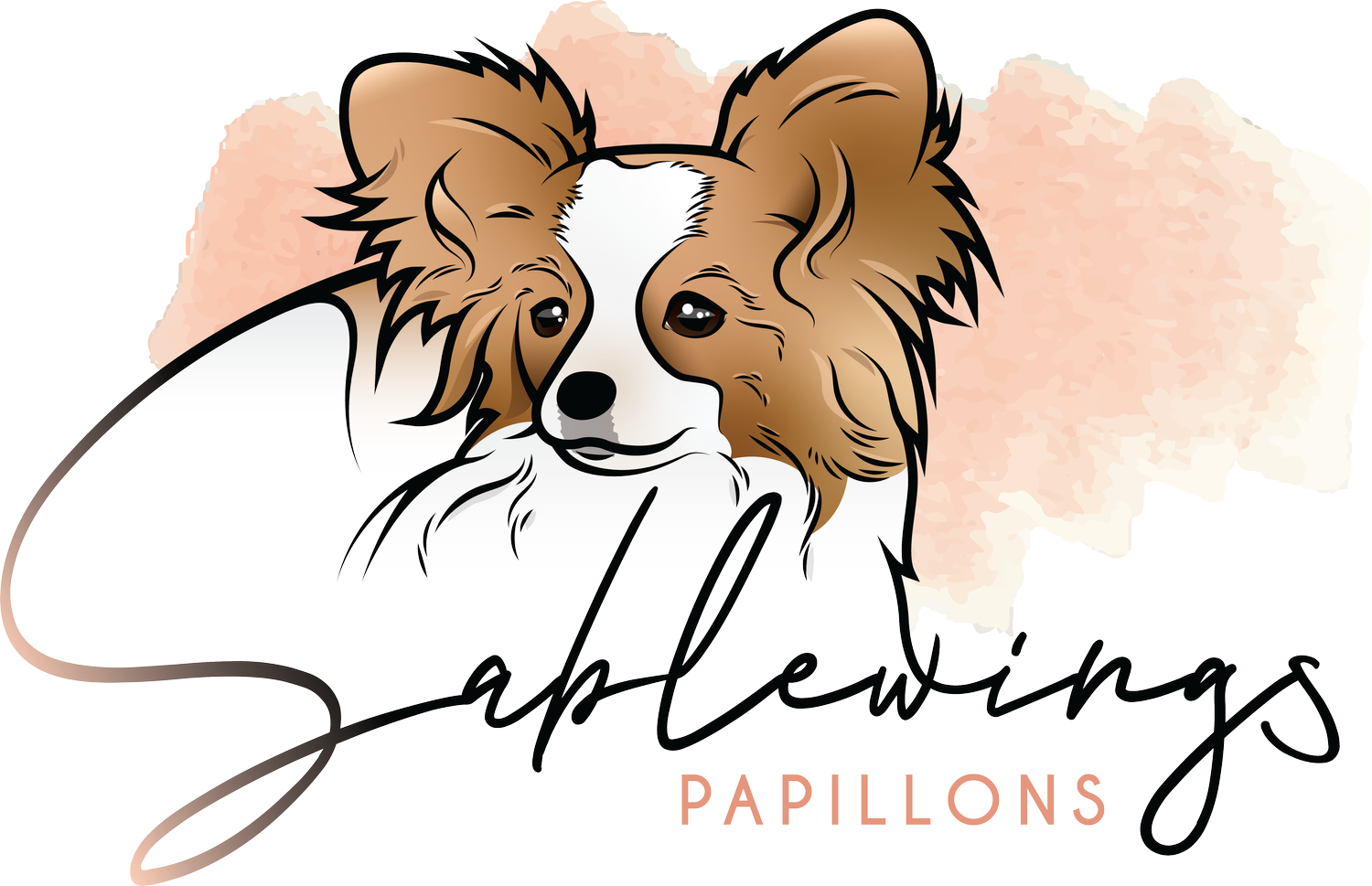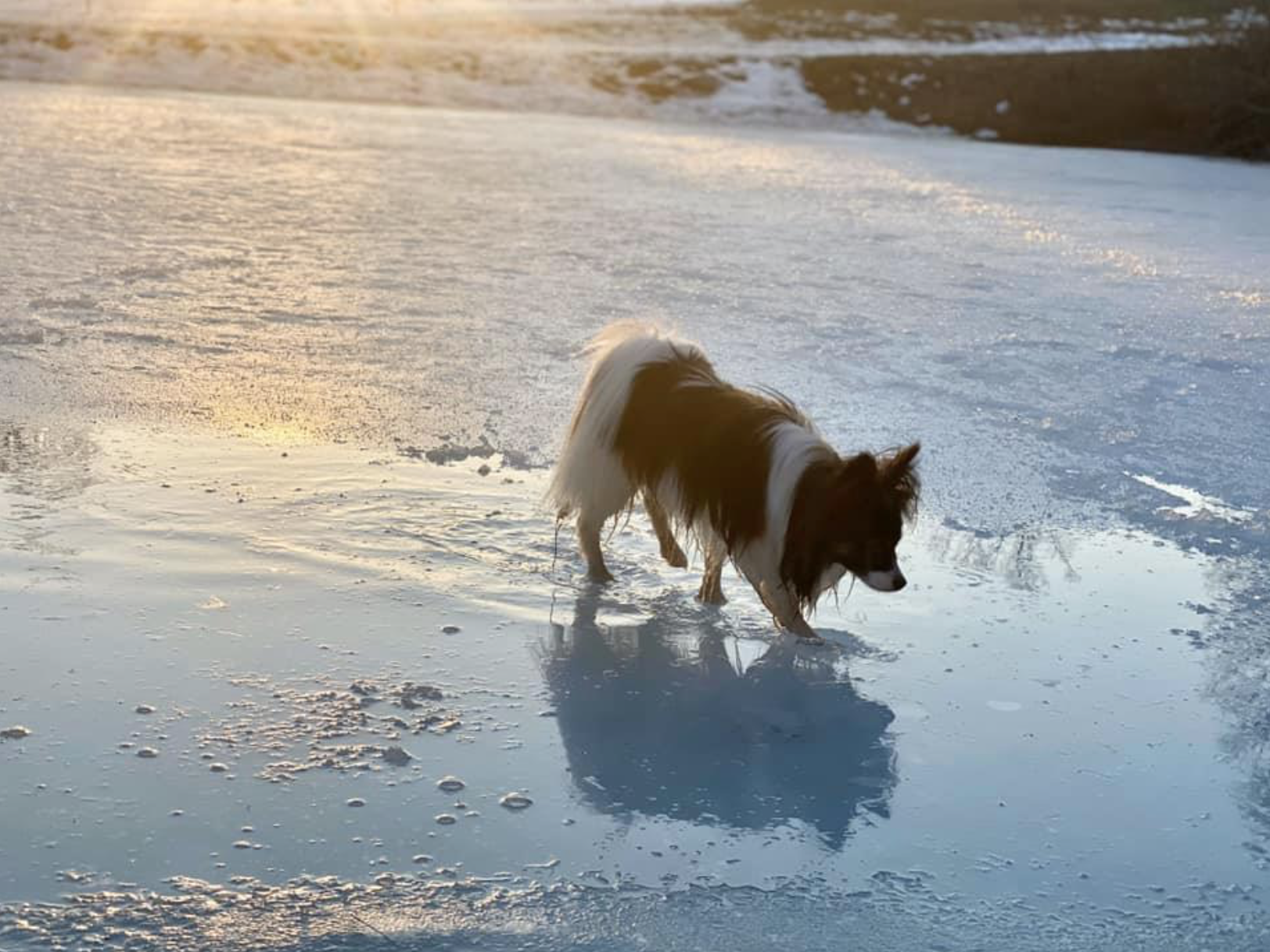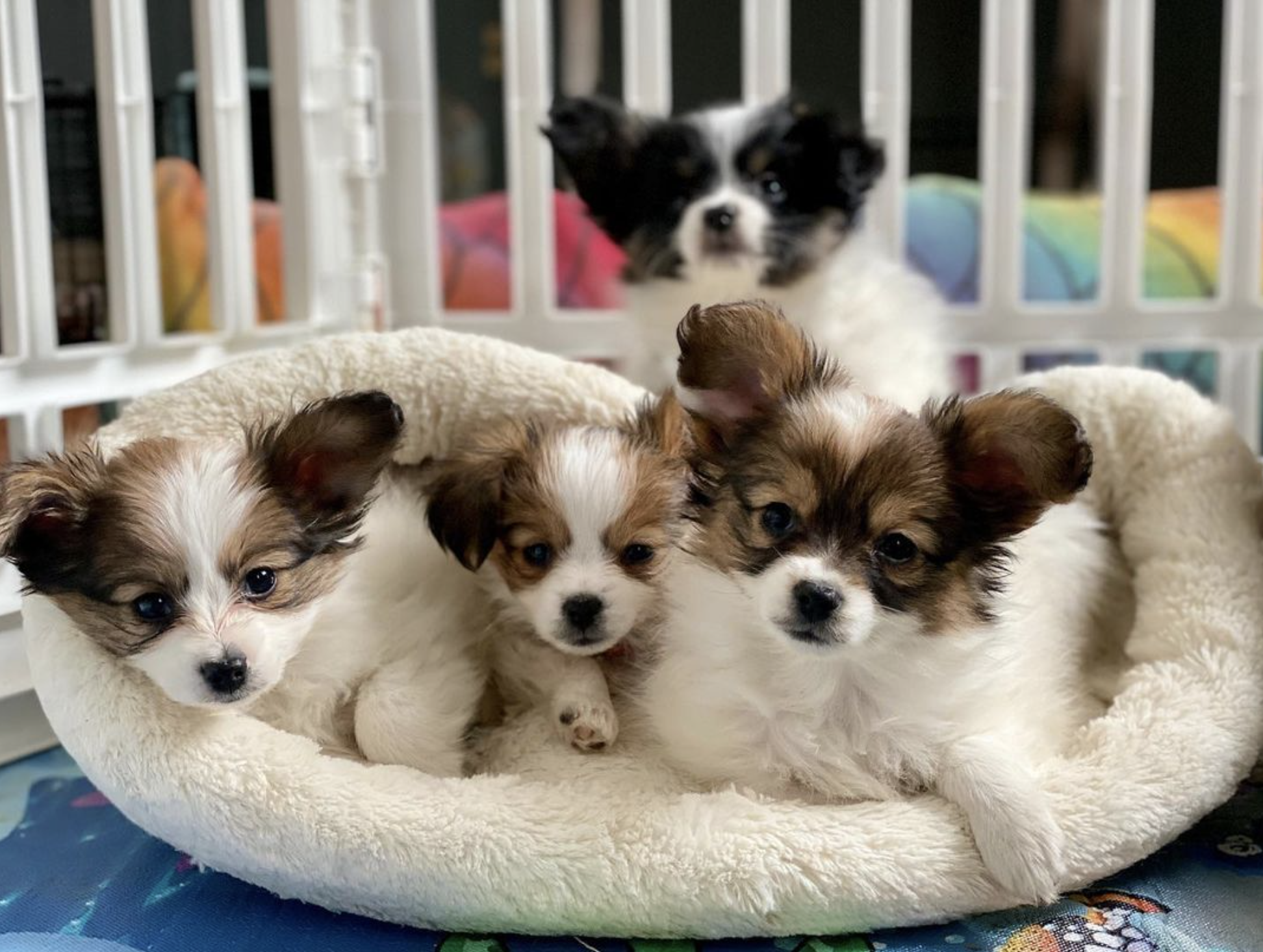Frequently Asked Questions
Q. What does your pricing look like?
As of 2025 the price is $2800 for a puppy, regardless of gender. Vet bills have increased dramatically…
Q. Do you take deposits?
No, I never accept deposits. I prefer that prospective buyers feel free to back out if they want or need to. A deposit is not necessary to keep you on my list.
Q. Do you have an application for me to fill out?
No. I prefer that we exchange a few emails and/or speak over the phone, as I can get a much better sense of who you are that way. I highly encourage a visit to my home as well.
Q. What should I do before bringing home a new puppy?
Please see my new puppy owners checklist page.
Q. What health testing is performed on your dogs?
All of our dogs will have OFA record of luxating patella, cardiac, CAER, and DNA tests for NAD, PRA-1, Factor VII deficiency and Von Willebrand’s. We make all of their results public for anyone to view, on this website and on OFA. Read more about health testing here.
Q. How are your puppies raised?
They are raised in our living room, with us. We are most fortunate to be able to work remotely and be with our dogs and puppies full time. As soon as the mother is easy about having other dogs around again we move the whelping pen into our living area and expose the puppies to normal life activities, sounds and stimuli. I can observe the puppies and interact with them as I work from my desk. The puppies are introduced to our older dogs very early in life and we tackle house-training by introducing a litter box at 4 weeks of age, as well as early-and-often outdoor bathroom trips. By the time puppies leave for their homes they can sleep a full night in a crate with no issues and will have a foundation in potty training for you to take over. We also spend a lot of time building play and prey drive in our puppies with toys to encourage confidence.
Q. What health insurance do you recommend for dogs?
All of our dogs are insured under their own policy. For our breeding-age females we use Trupanion with a breeding rider. It is expensive but worth the peace of mind. For our other dogs we use Pets Best, which offers the most options on coverage and deductible ranges. I recommend that any dog owner purchase an insurance plan for their dog if they can. Plans have gotten much better and health costs for dogs continue to rise. A bone injury can easily be many thousands of dollars and a trip to the emergency vet is $1500 minimum.
Q. What do your Papillons eat?
Our Papillons eat Purina Pro Plan. For years we fed either a raw food diet or a boutique grain-free food. Our decision to go back to a major commercial brand is because there is just no research to support the theory that a raw or grain-free diet is superior to commercial brands. In fact, most studied raw food (and home-cooked) diets have been found to have nutritional imbalances and all raw meats are capable of growing pathogens that can cause illness in dogs and even abortions in pregnant females. There is also still no scientific justification for removing grains from dog food, and it is still uncertain whether grain-free diets may play a role in the recent rise of DCM deaths and congestive heart failure. It is thought now that legumes, which replace grains in grain-free food, may be responsible for cardiac issues in younger dogs.
Q. What supplements do you recommend?
None. All major commercial brands of dog food are nutritionally balanced and adding a vitamin or mineral supplement is at best a waste of money and at worst can cause your dog to have too much of a certain vitamin or mineral. I would like to recommend probiotics, but the latest research is still showing that the benefits of probiotic supplementation in dogs is negligible or unclear. If you are hankering to supplement with something, a small bit of cooked or dehydrated liver or organ meats is a good treat for them.
Q. What do you do for dental care?
I brush their teeth every evening. It’s the only way.
Q. I’ve heard Papillons are hard to potty train. Is this true?
My suspicion as to why some owners find Papillons more difficult to potty train is because owners of small dogs are more likely to use pee pads because the mess is not as much to deal with. If you are raising a German Shepherd puppy the amount of urine and poops is already intolerable for indoors at 10 weeks old and you wouldn’t use pee pads for that; you’d make sure to get that puppy outside like clockwork. For a tiny Papillon puppy it is easier to make excuses like “it’s too cold outside for the puppy this morning so let’s use pee pads.” We have to understand that every time we let the puppy go to the bathroom in the house he is learning something, that this is where he goes. Unless you’re very good about your setup, the pee pads aren’t really teaching him “where” to go, and rugs and doormats also start to look a lot like pee pads, and then so does the general floor area.
I think one of the first places new puppy owners fail in potty training is establishing the routine of “when we go outside that means pee and poop.” They go outside and wait, the puppy plays, nothing happens, they get frustrated and go inside and then the puppy goes to the bathroom in the house. Creating an association between going outside and peeing and pooping is something I start working with here on my puppies for weeks before they go to their new homes. I would by no means call the puppies house trained when they go home at 10 weeks, as they still need the routine of being taken out first thing when they wake up, after eating, and every few hours, or they would certainly go in the house. But they do understand pretty solidly that going outside means it is now time to go pee and poop. This is 90% of the battle of potty training.
Q. Do Papillons bark a lot?
Yes and no. It really depends on the dog, its innate arousal level, and your training. Some Papillons are naturally very quiet. Some Papillons can be very yappy if they have a high arousal level and this will need to be trained out. Fortunately, Papillons are extremely intelligent and highly trainable.
Q. Do Papillons shed?
Yes. Anyone who tells you that Papillons do not shed is not being truthful. Papillons shed on the lighter side of average, probably because they are single coated instead of double coated like many other breeds. However they do shed more than a Poodle or a Maltese. As adults they tend to leave longer white hairs on dark furniture or your clothes. I do notice that intact dogs, especially intact females, seem to shed less than neutered dogs. Two of my intact females never get hair on me when I pick them up, but I am sure they must shed.
Q. Do Papillons need professional grooming?
Papillons truly are lucky in that most of them need next to no grooming to maintain their beautiful coats. As the hair fills out, most Papillons will be prone to developing matted fur behind their ears or around their necks where their collar is. Papillons require brushing or combing in these areas to prevent mats, and if mats still develop they can be cut out. Some people opt to give their Papillons a short summer haircut at the groomer’s, but this is not necessary. As far as professional grooming, Papillons do not need it at all.
Q. What grooming products do you recommend for Papillons?
I recommend investing in good quality grooming products. If you can only splurge on one thing, it should be a very good pin brush. The pin brush I recommend is the Chris Christensen Oval Pin Brush in 20 mm pins. As far as bathing, there are a number of very good lines on the market today, and you cannot go wrong with most of them.
Q. Do you feed grain-free food?
No. See above.
Q. Are Papillons good with young children?
The answer is maybe. All dogs are different and all children have differing behavior around dogs. There is no breed in which every dog of that breed is automatically safe around children. Some dogs like children and some don’t. We make sure all of our dogs have good experiences early on with children who are experienced with dogs. It is always a good idea for any parent to help a new dog and their children learn to like and respect each other so they can develop a good and lasting friendship.
That said, we will not home puppies to families with very young children who appear to have little experience with small animal handling. It’s not fair to the puppy or the child. It only takes one or two scary experiences with a child to ruin a good puppy’s confidence and temperament and that dog may have a lifelong fear of children that could result in snapping or other fear-based problem behaviors.
Q. Do Papillons get along with cats?
Yes! Most Papillons get along fine with cats or can become great friends. We frequently find ours cuddling with the cats. Young puppies may need to be taught not to chase the cat, but Papillons almost always grow to love and respect cats in the household.
Q. Do Papillons need a lot of exercise? What are Papillon energy levels like?
Yes and no. Most Papillons tend to slow down inside the house, especially as they mature. Inside the house they make excellent lap dogs. However, outside the house most Papillons will become very active. A good walk or play session(s) is best for Papillons, but if that cannot be done on some days most Papillons will not tear up the house in frustration. All of our Papillons can easily handle very long hikes of 10+ miles and absolutely love it. In short, Papillons adjust their level of energy to what yours is.
Q. Do you recommend vaccinating Papillons differently due to their small size?
No. All of our Papillons are vaccinated. Puppies are only vaccinated with up to two vaccinations at a time in case of a reaction. However, we have personally never had any of our dogs have a reaction to a vaccine. We also vaccinate for Leptospirosis and have never had a reaction. There is an outdated fear of the Leptospirosis vaccine in the small dog community, but fortunately the newer vaccine introduced some years ago is, in the vast majority of cases, quite safe. We also vaccinate all of our dogs with the Vanguard crLyme vaccine.
Q. What is the difference between a Papillon and Phalène? Aren’t they separate breeds?
The Phalène is the earlier form of the Papillon and they are virtually the same, except for the ear carriage. They are considered two varieties under the same breed. A Phalène can sometimes occur in a Papillon litter, but they usually do not have the correct ear carriage, and are rather just considered soft-eared. The distinction is only really important to breeders and fanciers, as to most people they will be unable to tell the difference.
Q. What is a Papillon?
From the AKC: “The quick, curious Papillon is a toy dog of singular beauty and upbeat athleticism. Despite his refined appearance, the Pap is truly a 'doggy dog' blessed with a hardy constitution. Papillon fanciers describe their breed as happy, alert, and friendly. A tiny dog, measuring 8 to 11 inches at the shoulder, you can still spot a Papillon a block away thanks to the large, wing-shaped ears that give the breed its name ('papillon' is French for 'butterfly'). Some Paps have erect ears; in others, known as the Phalene type, the ears are down. Paps are dainty and elegant, with a plumed tail, and a long, silky coat of several color combinations, the base color being white. More robust than they look, Paps are little dogs for all seasons and reasons. They thrive in warm or cool climates, in town or country, and are eager to join family fun. They are excellent agility dogs and are consistent winners at the sport's highest levels; less ambitious owners can train them to do all kinds of tricks.”


